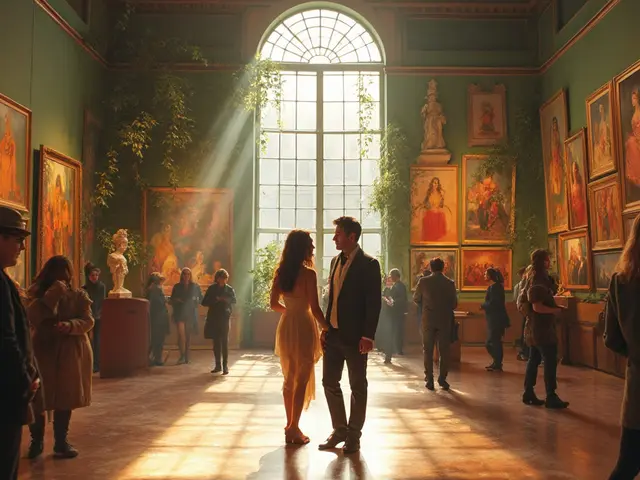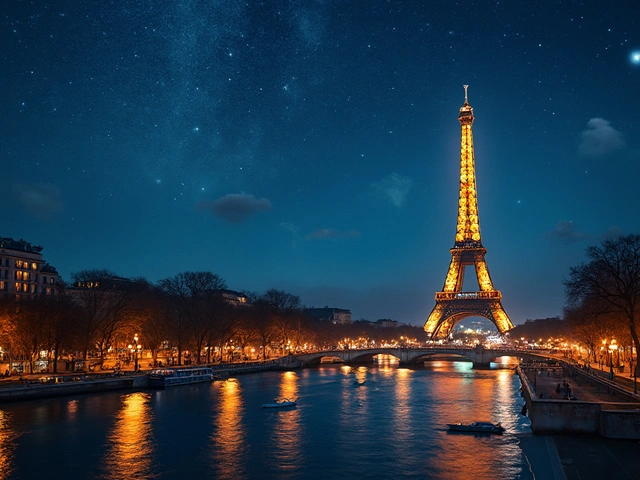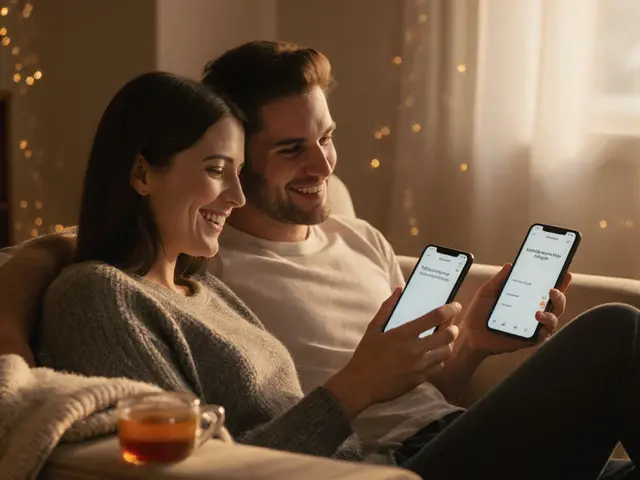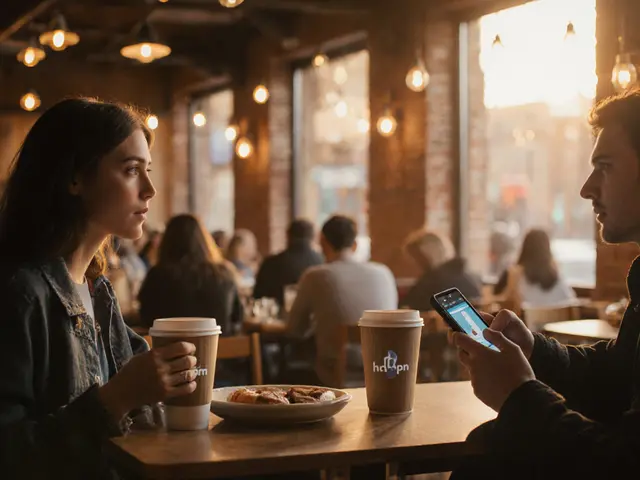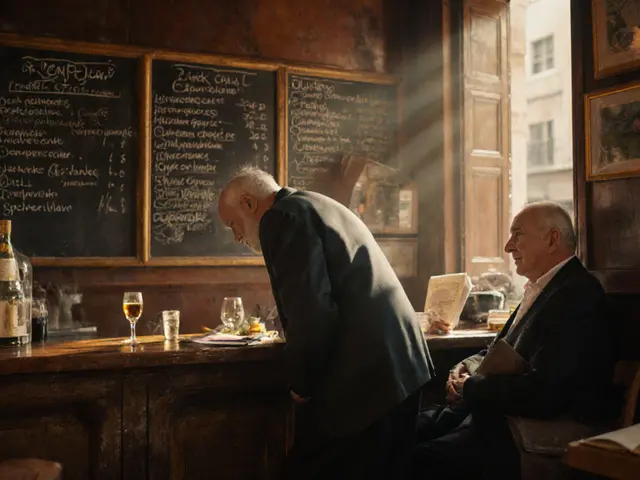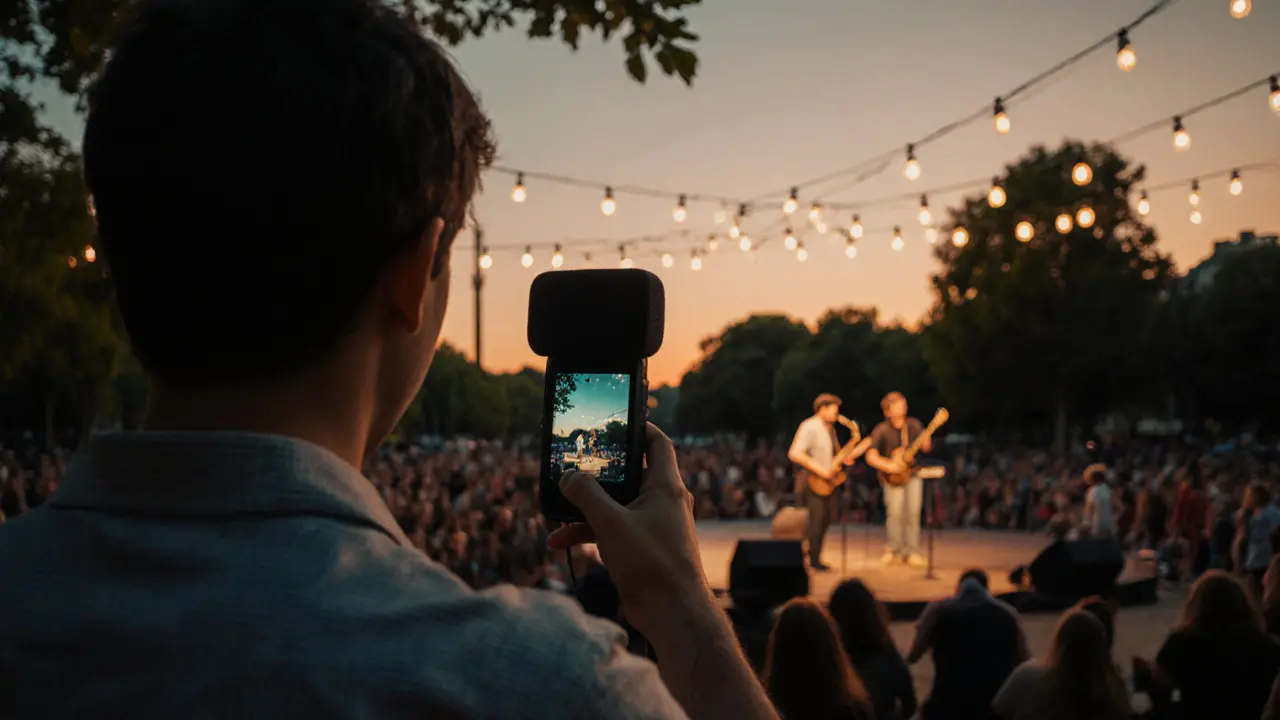
In Paris, live music isn’t just background noise-it’s part of the city’s heartbeat. From intimate jazz clubs in Saint-Germain-des-Prés to open-air performances at the Parc de la Villette, the city pulses with sound every night. But capturing that magic on your smartphone? That’s where most people fail. You’ve seen the blurry videos of a saxophone solo at Le Caveau de la Huchette-but the audio is muffled, the crowd noise drowns out the melody, and the whole thing feels flat. Here’s how to actually record live music in Paris like someone who knows the city’s rhythm.
Know Where the Sound Works
Not every Parisian venue is built for good recordings. Small jazz spots like Le Petit Journal Montparnasse or Le Duc des Lombards have thick walls, low ceilings, and packed crowds-perfect for atmosphere, terrible for phone mics. On the other hand, outdoor stages like the Jazz à La Villette festival or the Place des Vosges summer concerts offer cleaner acoustics because there’s space for sound to breathe. If you’re recording outdoors, position yourself 10 to 15 feet from the stage, not front row. That’s the sweet spot where instruments balance and crowd noise doesn’t overwhelm.Use the Right App-Not the Default Camera
The built-in Voice Memos or Camera app on your iPhone or Android is designed for casual clips, not professional-grade audio. In Paris, where music is often layered-piano, double bass, and brushed drums-you need control. Try FiRe (iOS) or RecForge II (Android). Both let you adjust gain, sample rate, and file format. Set it to 48 kHz, 24-bit WAV if possible. That’s what studios in the 15th arrondissement use. You’ll thank yourself later when you edit the track and don’t hear digital hiss.Protect Your Mic from Wind and Noise
Paris isn’t always quiet. The wind whistles down the Seine near the Pont Alexandre III. Buses rumble past on Rue de Rivoli. Even a café’s espresso machine can ruin a quiet ballad. Use a simple foam windscreen-available at any photo store like Photo Éclair on Rue de Rennes-for under €15. Clip it over your phone’s mic. If you’re near a busy street, turn your back to the traffic. At a rooftop gig like Le Perchoir, wind is your enemy. Hold your phone low, close to your chest, and angle the mic toward the stage-not up into the open air.
Don’t Rely on Zoom or Bluetooth Mics
You might think a fancy external mic will solve everything. But in Paris, Bluetooth connections drop during crowded concerts. I’ve seen it happen at La Cigale during a Phoenix show-three seconds of silence mid-song because the mic lost sync. Wired mics like the Rode VideoMic Go II plug directly into your phone’s headphone jack (or Lightning/USB-C with an adapter). They’re small, reliable, and cost under €100. If you’re serious, bring a second phone as backup. Many locals do. One phone records audio, the other captures video. Sync them later in free apps like DaVinci Resolve.Timing Matters More Than Location
Paris has rhythm. Weeknights at Le Baiser Salé are quiet-perfect for recording acoustic sets. Weekends at La Cigale or Le Zénith are loud, chaotic, and full of people filming with their phones held high. That’s when you get the worst recordings. Go early. Arrive 30 minutes before doors open. Find a spot near the side wall, not the center. That’s where sound engineers place monitors, so the mix is clearer. At La Cité de la Musique, the acoustics are designed for clarity-record near the back of the hall, not the front row. You’ll capture the full range of the orchestra without the distortion from over-amplified speakers.Respect the Artists and the Rules
Parisians love their music-but they also love their culture. Many venues, especially jazz clubs and classical halls like Salle Pleyel, ban recording. Signs are usually posted at the entrance. Don’t risk it. If you’re unsure, ask the staff. Some places, like Le Trianon, allow phone recording if you don’t use flash or a tripod. Others, like La Cigale, have official live recording apps where you can buy high-quality audio after the show. It’s €10 for a lossless file. Cheaper than a bad recording you’ll never listen to twice.
Post-Processing: Clean It Up, Don’t Overdo It
Your recording will have background chatter, coughs, and clinking glasses. That’s Paris. Don’t delete it all. Those sounds are part of the memory. But use free tools like Audacity to reduce constant noise. Go to Effect > Noise Reduction. Select a 2-second section of silence (like between songs) as your noise sample. Apply it gently. Don’t crank the reduction. Over-processing turns live music into sterile studio trash. Keep the reverb. Keep the applause. Keep the moment.Share It Right
Don’t just upload to Instagram with #ParisMusic. That’s noise. Tag the artist, the venue, and the date. If you recorded a rare performance at Le Sunset with a local legend like Emmanuelle Parrenin, that’s archive-worthy. Upload to YouTube with a clear title: “Emmanuelle Parrenin Live at Le Sunset, Paris - Oct 12, 2025.” Add the venue’s location and setlist if you can. People in Paris care about history. Your recording could become someone’s treasured memory years from now.What to Bring to Every Gig
- Your phone with a wired mic (Rode, Shure MV88, or similar)
- Extra battery pack (Paris metro stations rarely have outlets)
- Foam windscreen (€12 at Photo Éclair)
- Small tripod or beanbag (to steady your phone on a windowsill or ledge)
- Headphones to monitor audio live
- A notebook with venue rules written down (many are posted online in French)
Paris doesn’t reward lazy recording. It rewards patience, respect, and attention to detail. The city’s music scene is alive because people show up-not just to watch, but to listen. Your phone is just a tool. The real magic is in how you use it.
Can I record live music at every Paris concert?
No. Many venues-especially jazz clubs like Le Caveau de la Huchette or classical halls like Salle Pleyel-ban recording to protect artists’ rights. Always check posted signs or ask staff. Some places, like La Cigale, offer official audio downloads after the show for a small fee. Recording without permission can lead to being asked to leave or having your footage deleted.
What’s the best smartphone app for recording live music in Paris?
For iPhone users, FiRe is the top choice-it lets you record in 24-bit WAV at 48 kHz, which preserves dynamic range. Android users should try RecForge II. Both apps give you manual control over gain and file format, unlike the default camera or voice memo apps. Avoid apps that auto-enhance audio; they flatten the natural sound of live instruments.
Should I buy an external microphone for my phone?
Yes-if you plan to record more than once. A wired mic like the Rode VideoMic Go II or Shure MV88 connects directly to your phone and picks up clearer sound than the built-in mic. Bluetooth mics often drop signal in crowded venues like Le Zénith. Wired is more reliable. You can find them at Photo Éclair or B&H Paris for under €100.
Where are the best places in Paris to record live music?
Outdoor venues like Place des Vosges, Parc de la Villette, and the Seine riverbanks during summer festivals offer clean acoustics. Indoors, La Cité de la Musique and Le Trianon have excellent sound systems. Avoid small, packed jazz clubs like Le Petit Journal Montparnasse unless you’re close to the stage and using a directional mic. The sound there is intimate but muddy for recordings.
How do I fix background noise in my Paris live recordings?
Use Audacity (free) to apply noise reduction. First, select a 2-second section of silence between songs as your noise sample. Then go to Effect > Noise Reduction > Get Noise Profile. Apply the effect at 6-12 dB reduction. Don’t overdo it-Paris live music includes ambient sounds like clinking glasses and murmured applause. Those are part of the story.


